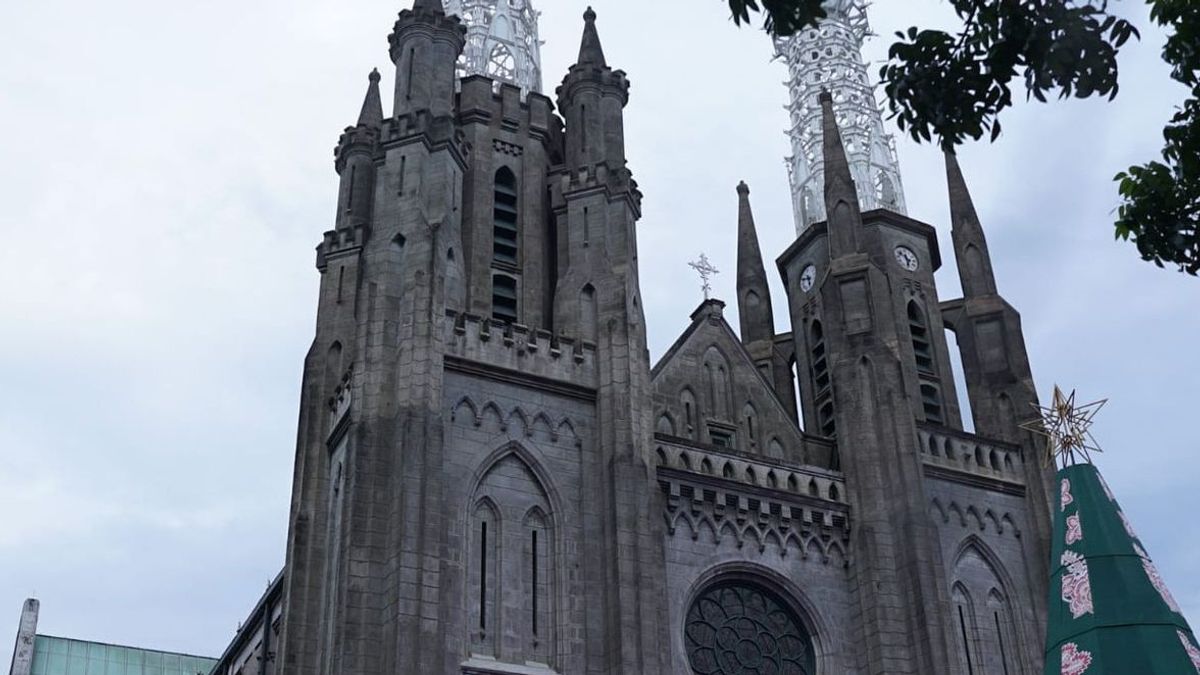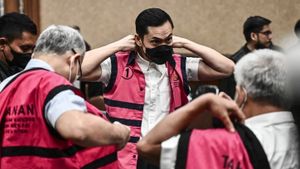JAKARTA - The Cathedral Church is an icon of the city of Jakarta. Every time before Christmas, this Catholic church is always in the spotlight. The architectural beauty with the history of its construction is the main attraction. The cathedral church, which was originally named the Church of the Blessed Mother of the Appreciation of Heaven (De Kerk van Onze Lieve Vrouwe ten Hemelopneming) is so special.
Historically, the construction of the Cathedral Church began when Pope Pius VII appointed Pastor Nelissen as apostolic prefect of the Dutch East Indies in 1807. Launching Indonesiakaya.com, it was then that the spread of mission and construction of Catholic churches in the archipelago was encouraged, including in Jakarta.
At that time, Pastor Nelissen and Pastor Prinsen arrived in Batavia via Pasar Ikan Harbor in 1808. At that time, the two of them met with Doctor FCH Assmus to discuss the establishment of a Catholic church in Batavia. However, the church that you want to build is not in a location around the Banteng Field.
The church was built in the form of a bamboo house located in the southwest corner of Buffelvelt - now the Gama Ministry Building. All these buildings have been lent by the government to the two priests.

After that, slowly the Catholics in Batavia began to receive many grants. One of them is in the form of a plot of land located northwest of the Banteng Field. However, development has not yet been carried out.
The reason is that the church does not have sufficient funds. As a result of lobbying the colonial government, the church, which was originally a bamboo house, was later abandoned. The church again received assistance in the form of a small building on Jalan Kenanga in the Senen area.
The building was once owned by a Dutch official, Cornelis Chastelein in 1810. The Dutch East Indies government through the Governor General Herman Williem Daendles from England gave a new place for the Cathedral Church, precisely in the Senen area. This is also what makes the history of the Cathedral Church interesting.
The transfer of Dutch power to EnglandThe Catholic Church began to be noticed during the transition of Batavia's power from the Netherlands to England. As is known, the Netherlands at that time embraced Protestant Christianity and England adhered to Catholicism. If you look at it, the old churches in Jakarta with hundreds of years old are mostly Protestant Christian churches.
Therefore, when the British took control of Batavia, the Catholic church carried out many renovations. The churches are then used as places of worship that can accommodate 200 congregations. However, that existence did not last long.
In 1826 a great fire burned many buildings in the Senen area. Pastoral buildings are also victims. But the church building did not catch fire, even though it was damaged in several parts.
After the fire, the damaged church building was not renovated. This is because the land is not land belonging to the church. In the end, the Catholic church moved again. The empty residence of the general teachers was chosen as the main location. To this day, the Cathedral Church stands at this location.
Even though it was comfortable in its new location, the Cathedral Church again had to face trials in 1890. There was no wind, no rain, the Cathedral collapsed on its own. "The incident occurred three days after the church celebrated Easter," explained Jakarta tourism activist Ira, quoted by Kompas.com.
One year later, the church building was renovated in two stages. The work took place over a period of ten years.
That is the story of the ups and downs of the Jakarta Cathedral Church which was appointed by the DKI government as a protected cultural heritage building in 1993. The Cathedral Church was later transformed into one of the famous icons of the city nicknamed the Queen of the East.
The English, Chinese, Japanese, Arabic, and French versions are automatically generated by the AI. So there may still be inaccuracies in translating, please always see Indonesian as our main language. (system supported by DigitalSiber.id)









